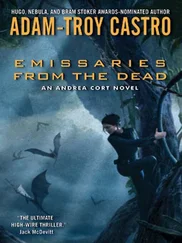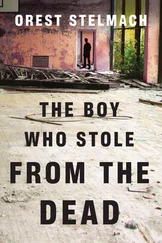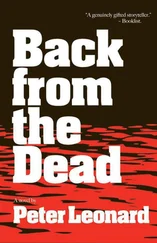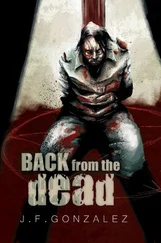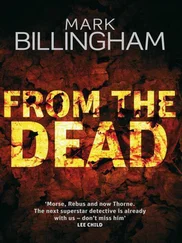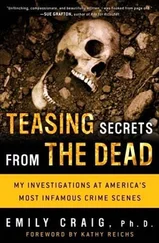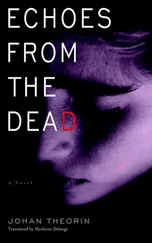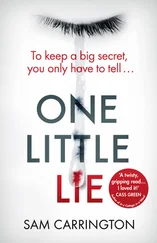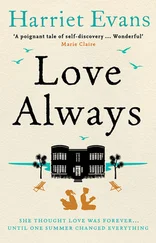
When I first started working at the morgue, I was continually amazed by the tent city that had sprung up around it, and by the generosity and creativity of the New Yorkers who were trying to show their support in any way they could. Just around the corner from us, the Salvation Army and numerous charitable organizations made sure we had a continuous supply of soft drinks, water, candy, and crackers, as well as hot meals three times a day. The Salvation Army canteen was staffed continually and offered not only good, nourishing food, but smiles and a touch of home. Their tables often had fresh flowers in little bud vases and notes from schoolchildren and other well-wishers taped to the walls. Someone had obviously put a lot of thought into the decorating scheme, because these notes were positioned throughout the makeshift dining hall, so that wherever you looked, you could see someone's message of hope or thanks.
When I first got to New York, the weather was balmy, but when it got cold outside, the Salvation Army brought kerosene heaters into the mess tent. A common sight inside the dining tent was a group of morgue workers clustered around one of these devices, holding out hands that were chilled and raw from repetitive washings and hours inside thin latex gloves. The bustle and camaraderie of tired workers in surgical scrubs working long hours, combined with the makeshift surroundings, made the whole thing look like a scene out of the TV show M*A*S*H.

One of the hardest parts of my New York tours was how disoriented my life became. Working on the night shift meant that I practically never saw the daylight. I'd leave for work at six p.m., when it was already dark, and return home at seven a.m., when the sun had not yet quite come up. And when you work all night long for more than a month, you begin to lose all sense of time. The hours blend into one another and so do the days, because every day is exactly like the one before and the one you know will come after. It's hard on a practical level-how do you manage to do your laundry, or get a haircut, or call your niece to say “Happy Birthday”? But it's hard on a psychological level, too-a sustained course of sensory deprivation and lack of sunlight that I found almost as wearing as the pervasive grief.
One day, though, my routine was broken-though not necessarily in a way I would have chosen. Late one afternoon near the middle of October, DMORT regional commander Todd Ellis made an urgent call to my room, telling me to go immediately to the command post that filled the top floor of the Sheraton New York Hotel, where we were now staying. Lieutenant William Keegan, the night shift recovery supervisor at Ground Zero, needed my help recovering some incinerated bones on top of what they now called “the pile”-the mountain of debris that had once been the Twin Towers.
Until recently, several fires had smoldered in and around the pile, and firefighters had only recently managed to put them out. As a result, searchers were just now starting to gain access to this area, a mass of rubble and concrete that rose up steeply, supported only by the enormous steel beams that had somehow survived the blast. As soon as workers had seen the burned bone fragments, they halted that particular excavation effort until I could get there and help with the bones' removal.
Two uniformed NYPD officers rushed me to the site in a nerve-wracking trip: speeding through the streets of New York in a police car with flashing lights and a siren that pierced the air, skirting other vehicles and pedestrians with only inches to spare. Finally, we reached our destination, the battle-scarred face of Engine 10 fire station, where Lieutenant Keegan was waiting for me. Quickly, he led me to an area where dozens of police officers were sifting through buckets of fragmented concrete, searching desperately for the bones of their fallen brothers.
“We found a weapon and a charred NYPD badge up there by that grappling crane, so we know at least one police officer was up there,” Keegan explained. “But we're not sure how to get the rest of the bones out without any more damage.” He pointed almost straight up, past a bulldozer and a huge crane that now seemed to be poised in mid-swing. Their diesel engines were rumbling at idle as the operators sat quietly, watching the sifters down below.
“We'd like you to come up there with us,” Keegan continued. I wished I could say no-but how could I refuse? With my heart in my throat, I inched my way up the face of the pile, gripping the slabs of broken concrete and picking my way carefully across pieces of steel that spanned cavernous spaces below. I looked down once into a seemingly bottomless abyss, where glowing embers from somewhere below sent up tendrils of smoke that stung my eyes. I tried not to look down again-but looking up was almost as frightening. The steel framework that had formed the towers' façade rose to incredible heights in front of me, and I could swear that it seemed to move. Then, I realized that it was actually the ground that was moving, in what felt like a sustained minor earthquake, a subtle shifting and an almost constant vibration of the materials under my feet.
“That movement is from all the heavy equipment working on other sections of the site,” Keegan explained. “This whole mass of debris is sort of suspended like jackstraws, so when one piece shifts, sometimes the whole thing moves.”
“Oh, boy,” I said to myself. “I thought all those days spent in sinkholes, coal mines, and limestone ravines back home had made you tough, Emily. But this is almost too much for the old girl.” I bluffed myself past my fear and kept going.
I'd taken to heart Keegan's sense of emergency, so the moment I reached the top of the pile, I began suggesting to the cops and firefighters what I thought we should do. Almost immediately, I could see, they began to get their backs up, rolling their eyes and muttering to each other. But I'd been in this situation before, though, and I had some idea how to handle it.
“Now, gentlemen,” I said, with just a hint of smile and my best Southern drawl. “I know you are all experienced rescuers. After all, you are New York 's Finest and Bravest, and I'm nothing but a blonde from Kentucky. But I think we can level the playing field here a little if y'all call me ‘Doc' and I call y'all ‘Sugar.'”
After a shocked pause, they burst out laughing, and that was all it took. For the next hour, we sifted bones out of the ash, working together as colleagues. They taught me how to recognize artifacts buried in the odd assortment of debris we were digging through, and I taught them how to recognize fragments of calcined bone.

A standard DMORT tour of duty is two weeks long. After my first two weeks were up, DMORT asked me to stay for a second tour and I readily agreed. Then, a few days before my second tour of duty ended-when I would have served thirty nights without a break-DMORT asked me to stay on for a third tour.
“I just can't do it,” I told my commander. “I haven't seen daylight in four weeks. I'm brain-dead, I'm exhausted, and I have a mountain of work waiting for me back in Kentucky. Please, cut me my orders and send me home.” What I thought but didn't say was that I was also emotionally wrung out. As the head of night shift triage and one of the older workers on-site, I was the person on whom the others had leaned. They counted on me to keep it together when someone burst into uncontrollable tears or wandered outside in a daze, overcome by the realization that the remains on the table belonged to a person he or she had known. I was more than willing to provide any support I could-but now I simply had nothing left to give.
Читать дальше




